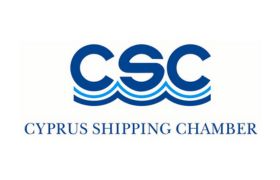International tax reforms and supply chain transformations accelerated by the COVID-19 pandemic are contributing to an unprecedented level of uncertainty and risk for businesses’ transfer pricing functions, according to a new EY report.
- 76% of transfer pricing leaders are challenged by volume and complexity of global tax reforms
- 65% feel they lack input into key business decisions
- 58% see new legislation among their top three transfer pricing risks
The 2021 EY International Tax and Transfer Pricing Survey looks at the role and impact of transfer pricing – a critical tax function for organizations around the world that oversees internal corporate transactions including cross-border payments between subsidiaries, property leases and intellectual property licenses.
The biennial survey canvassed the views of 979 transfer pricing professionals in 53 jurisdictions across 25 industries. It highlights the burden of increased workloads on transfer pricing executives fueled by recent developments.
Seventy-six percent of respondents say they are challenged by the volume and complexity of global tax reforms. Seventy-one percent of respondents say that these reforms will lead to increased transfer pricing-related costs for their organizations – 30% predict that costs will rise by at least 10% over the coming three-year period.
The survey also shows that 58% of transfer pricing leaders say they are not involved as much as they need to be in key business decisions as the world starts to emerge from the pandemic. Of this total, 24% say they are involved in some, but not all, decisions; and 30% report that they are only involved on a reactive basis.
New or evolving legislation is seen by 58% as one of the top three factors in transfer pricing risks, with 25% mentioning it as the biggest contributor.
According to the survey, fundamental changes in the dynamics of businesses around the world, in particular the restructuring of supply chains and changing working patterns, will have a real impact on transfer pricing work. Sixty-one percent of survey respondents say they will likely be taking steps to modify their organization’s approach to transfer pricing as well as their operations, compliance and documentation within the next two years.
Respondents cite a number of different drivers for these changes, ranging from changes to their business model (52%), supply chain (43%), work from anywhere practices (46%) or environmental, social and governance (ESG) pressures (36%).
As organizations increasingly work from anywhere the survey shows that many respondents anticipate impacts resulting from workers being stranded outside the jurisdiction in which they are employed – 47% say they face these challenges now and 49% expect to do so over the next two years. In addition, 75% say they will struggle to find workers with the necessary transfer pricing talent.
There is also a view shared among survey respondents that more frequent and rigorous audits will become the norm. Sixty-five percent predict a rising number of transfer pricing audits overall; 53% anticipate greater scrutiny of transfer pricing documentation; and 48% anticipate more rigorous audits in general, often investigating multilateral issues or entire value chains.
The issues that respondents believe are most likely to come under scrutiny include intellectual property-related matters such as location and ownership of assets and control of risk (cited by 38% of respondents), permanent establishment (37%) and headquarter and management services transactions (36%).
Philippos Raptopoulos, Partner and Head of Tax and Legal Services at EY Cyprus, said: “The pandemic has seriously disrupted supply chains and affected business models by placing much greater emphasis on remote work. This has created transfer pricing challenges, especially concerning permanent establishment and profit allocation, and led to the introduction of new legislation worldwide. Transfer pricing executives can expect to see their workload increase and will need to embrace new digital tools to cope. They will also be required to be more actively involved in key business decisions to ensure their alignment with corporate strategy.”













